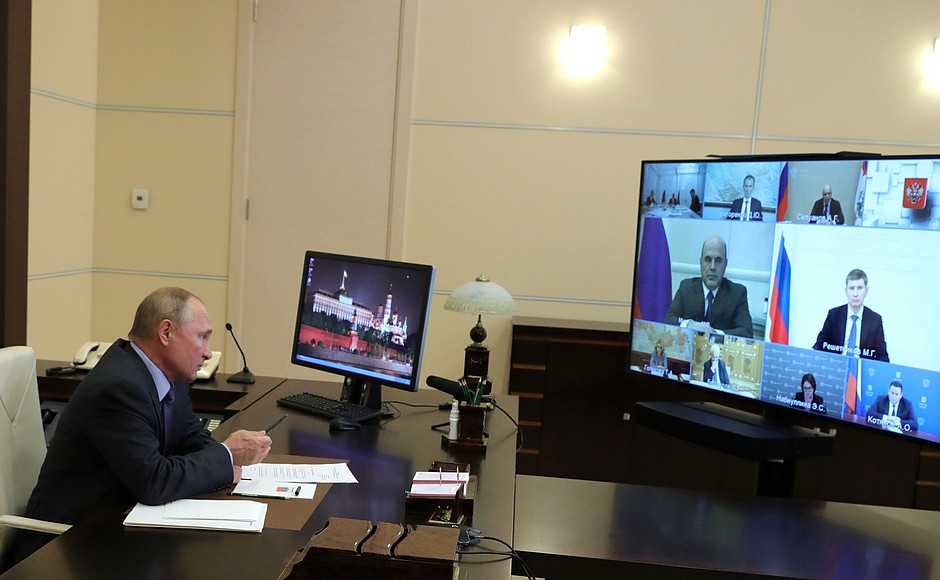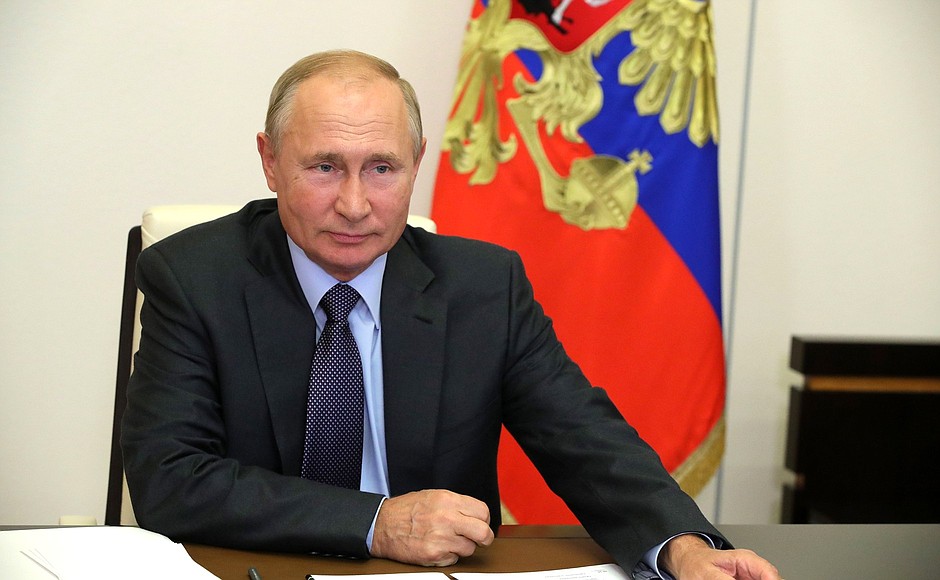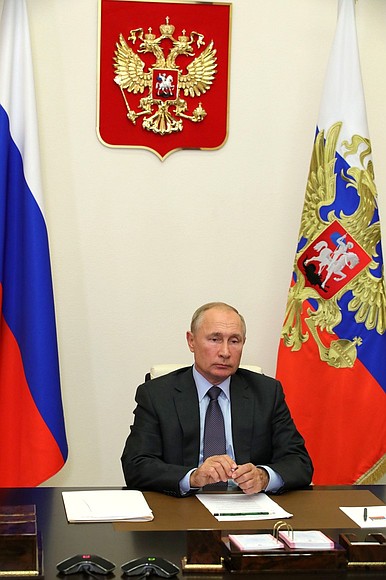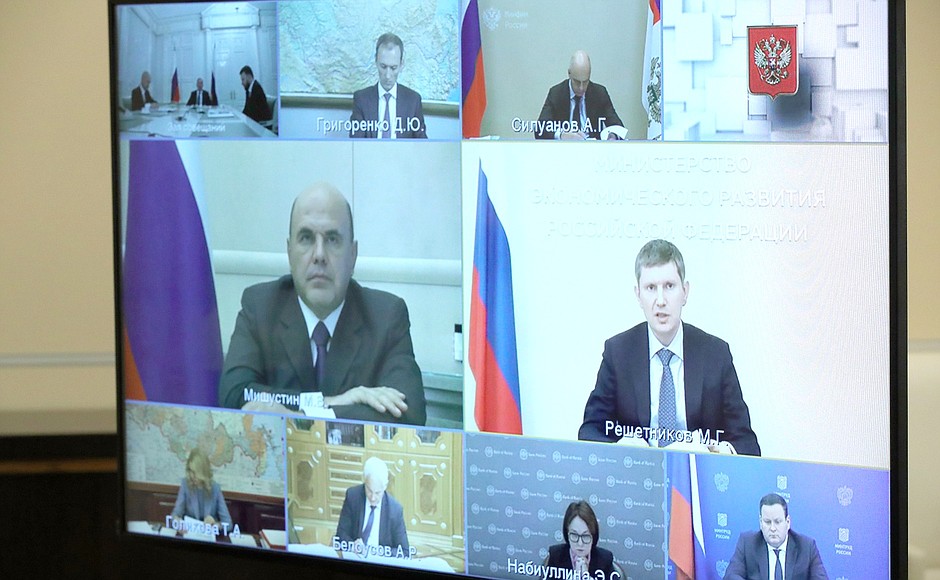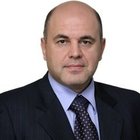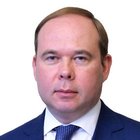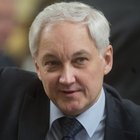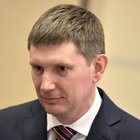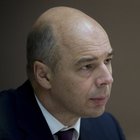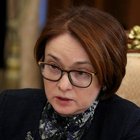The meeting participants included Prime Minister Mikhail Mishustin, Chief of Staff of the Presidential Executive Office Anton Vaino, First Deputy Prime Minister Andrei Belousov, First Deputy Chief of Staff of the Presidential Executive Office Sergei Kiriyenko, deputy prime ministers Tatyana Golikova and Dmitry Grigorenko, Presidential Aide Maxim Oreshkin, Minister of Labour and Social Protection Anton Kotyakov, Minister of Economic Development Maxim Reshetnikov, Minister of Finance Anton Siluanov and Central Bank Governor Elvira Nabiullina.
* * *
President of Russia Vladimir Putin: Good afternoon, colleagues,
I suggest that today we discuss, together with relevant ministries and the Central Bank leadership, the economic situation in the country, assessing its key trends and, of course, charting our subsequent steps to encourage economic growth, boost employment and improve incomes of Russian citizens. We have been holding such meetings on a regular basis.
Just like the whole world, Russia faced objective economic difficulties this year. Entire sectors, primarily trade and services, the construction industry and some industrial facilities were shut down due to the coronavirus epidemic.
In this connection, I would like to note that the Russian economic slump and the GDP contraction were less substantial than in other leading countries. We know that the country posted an 8.5 percent GDP reduction in the second quarter of 2020, while the United States and the Eurozone posted 9.5 and 15 percent, respectively.
According to some experts, this is, of course, linked to an extent to the structure of Russia’s economy. However, this is not the only factor. Obviously, targeted, well-thought-out and, most importantly, timely measures taken at the federal level, by the Russian Federation Government and our colleagues in the regions, to support employees, enterprises and entire sectors played their role.
Many specialists and experts agree today that the most dangerous, critical period is now behind us. Indeed, economic growth resumed in Russia in June. Consumer activity is on the rise, and vital indicators such as electricity consumption and freight rail traffic are gradually returning to last year’s figures. The head of Russian Railways has recently informed me about this.
Of course, it is true that the revival of business activities is proceeding unevenly. Much will have to be done to regain the trajectory of sustainable growth across the board in all spheres. We held an in-depth discussion on this at a similar meeting in June. Of course, many economic indicators and forecasts have become more positive and accurate since then.
However, I would like to draw the attention of the Government and our regional colleagues to the following. Although our enterprises and companies have resumed their operations and there are other positive economic trends, I would like you to focus on the unemployment rate. It remains quite high in Russia, 6 percent of the economically active population. Let me remind you, that we reported such level back in March 2012. About eighteen months ago, it was 4.7 percent, but it is 6.3 percent today. It may not look high in percentage points, but it amounts to considerable growth, nevertheless.
We have taken unprecedented measures to support those who lost their jobs. We increased the maximum unemployment benefit to the subsistence wage. But this has put up registered unemployment. Those who did not register for unemployment pay before are doing this now that the payment has improved, and so the number of jobless has grown accordingly. This is clear. We also complemented these payments with child allowance.
I would like to remind you that these measures were initially a temporary payment for a limited period of time. However, the labour market situation remains serious, as I have mentioned. We must continue to support those who have not yet found new jobs. Colleagues, today I expect you to tell me about your proposals for organising this assistance.
At the same time, I would like to remind you about the priority objective set to the Government – to restore the 2019 employment level before the end of 2021 by bringing unemployment down to 4.7 percent of the economically active population, as I have already said.
Today I would like you to tell me what is being done towards this, including your proposals for the draft federal budget, which should be ready shortly, and amendments to national projects. We have spoken about this. I would like to point out that everything we do at this stage of economic restoration should serve our long-term development goals. This should provide a solid basis for structural changes.
Let us talk about all of this now.
<…>
